Seven Questions Over Breakfast with Claire A. Nivola
 March 28th, 2011 by jules
March 28th, 2011 by jules
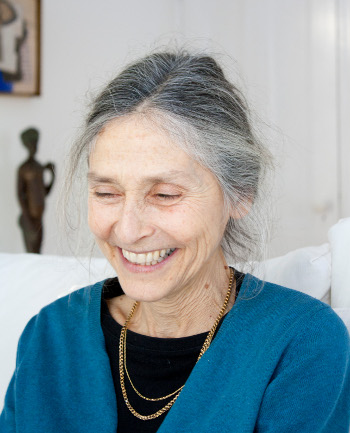 At this profile of author/illustrator Claire A. Nivola (in celebration of this 2008 Candlewick title), she states, “Writing for children is a serious business.” Claire would know. Her first illustrated title was back in 1970, though she did take a break from it all for many years. “Being a mother absorbed my heart and intellect,” she writes at that link. (See also her response to the final two questions in my interview below, what I find to be a profoundly reflective response that made me nod my head an awful lot and just so happens to capture something I think about a great deal myself.) Nevertheless, Claire has been working in the field for a long time and has seen many trends in publishing books for children come and go.
At this profile of author/illustrator Claire A. Nivola (in celebration of this 2008 Candlewick title), she states, “Writing for children is a serious business.” Claire would know. Her first illustrated title was back in 1970, though she did take a break from it all for many years. “Being a mother absorbed my heart and intellect,” she writes at that link. (See also her response to the final two questions in my interview below, what I find to be a profoundly reflective response that made me nod my head an awful lot and just so happens to capture something I think about a great deal myself.) Nevertheless, Claire has been working in the field for a long time and has seen many trends in publishing books for children come and go.
I’m so pleased to have Ms. Nivola over for coffee this morning and share her rich and intricate folk-art-style illustrations with readers. She’s here to discuss her upcoming Spring picture book, all about her father’s hometown on the island of Sardinia, and I’ve got a sneak-peek into some of the illustrations from that beautiful title. And if you missed last year’s Emma’s Poem: The Voice of the Statue of Liberty, written by Linda Glaser (2010) and which was awarded the 2011 Sydney Taylor Honor Award in the Younger Readers category, you’re in for a treat this morning with some spreads here from that, as well. Claire’s very stylized, detailed illustrations are captivating, and so many of the books she’s both written and illustrated or illustrated have been nonfiction titles, thus making this a fitting post for the kidlitosphere’s Monday celebrations of nonfiction.
Let’s get right to it, and I really appreciate Claire taking the time to visit.
Jules: Are you an illustrator or author/illustrator?
Claire: Illustrator and Author/Illustrator.
The Story of Wangari Maathai, Farrar, Straus and Giroux, 2008
(Click each spread to enlarge.)
Jules: Please list your books-to-date.
Claire: Written and illustrated by me:
- Planting the Trees of Kenya: The Story of Wangari Maathai (2008, Frances Foster Books, Farrar, Straus & Giroux)
- The Forest (2002, Frances Foster Books, Farrar, Straus & Giroux)
- Elisabeth (1997, Frances Foster Books, Farrar, Straus & Giroux)
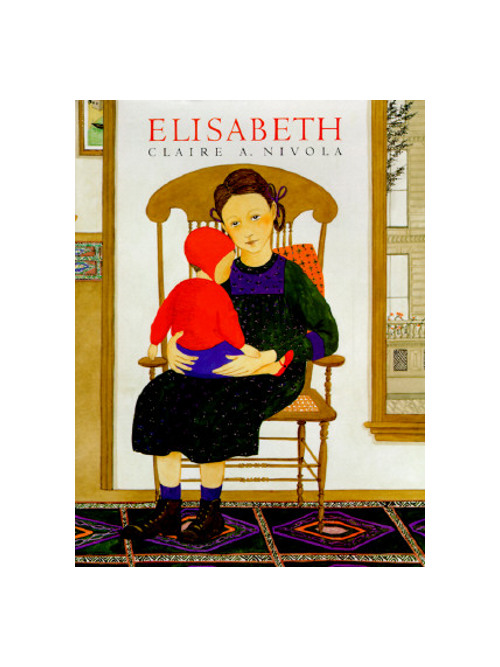
Illustrated only:
- Emma’s Poem: The Voice of the Statue of Liberty by Linda Glaser (2010, Houghton Mifflin)
- The Silent Witness by Robin Friedman (2005, Houghton Mifflin)
- The Flag Maker by Susan Campbell Bartoletti (2004, Houghton Mifflin)
- The Friday Nights of Nana by Amy Hest (Candlewick Press, 2001)
- The Mouse of Amherst by Elizabeth Spires (Frances Foster Books, FSG, 1999)
- Tell Me a Real Adoption Story by Betty Jean Lifton (Alfred A. Knopf, 1994)
- The Messy Rabbit by Ruth Nivola (my mother!), (Pantheon Books, 1978)
Jules: What is your usual medium, or––if you use a variety—your preferred one?
Claire: Watercolor and gouache.
Jules: If you have illustrated for various age ranges (such as, both picture books and early reader books OR, say, picture books and chapter books), can you briefly discuss the differences, if any, in illustrating for one age group to another?
Claire: Almost every book I have worked on has been a picture book. The Mouse of Amherst was for slightly older readers, and I did the illustrations in pencil, but it didn’t feel different — maybe because I draw sketches in pencil for all my books before painting the final versions in color. In general, I often prefer drawings to paintings. In a drawing, something is being worked out; the process is visible.
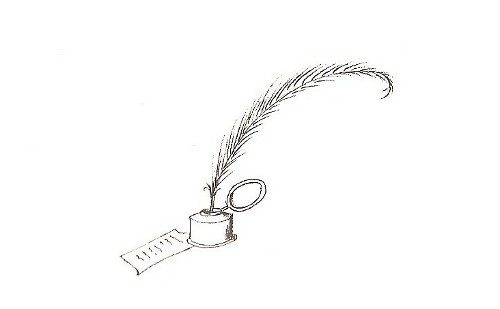
Than you would give them credit for!”
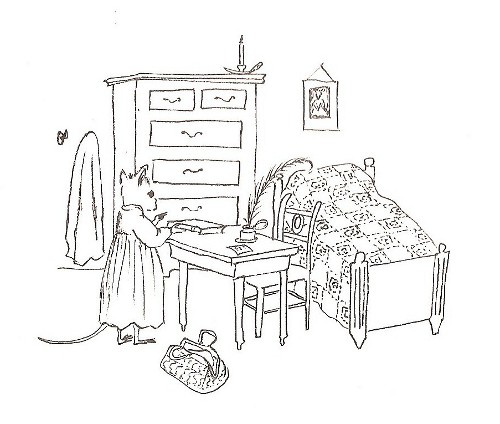
made me feel immediately at home.”
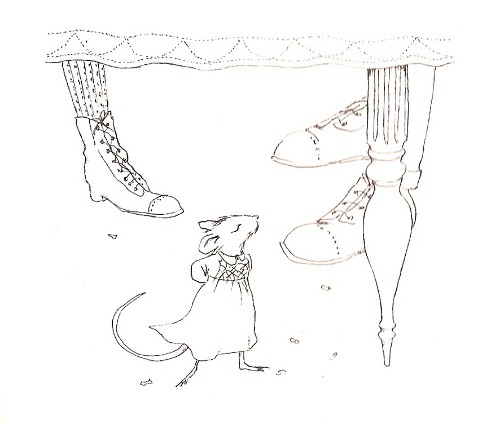
my famished brain made a perfect picture of the feast.”
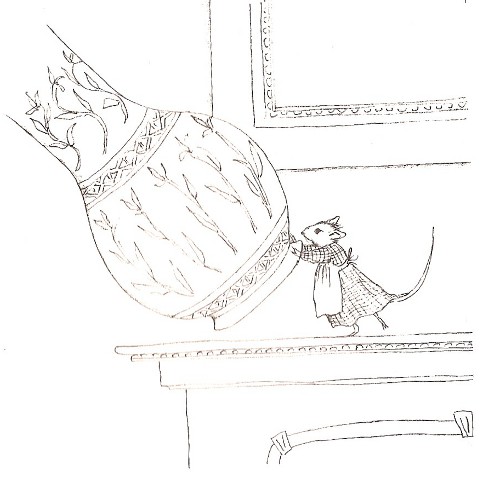
then crashed to the floor, missing him by a hair.”
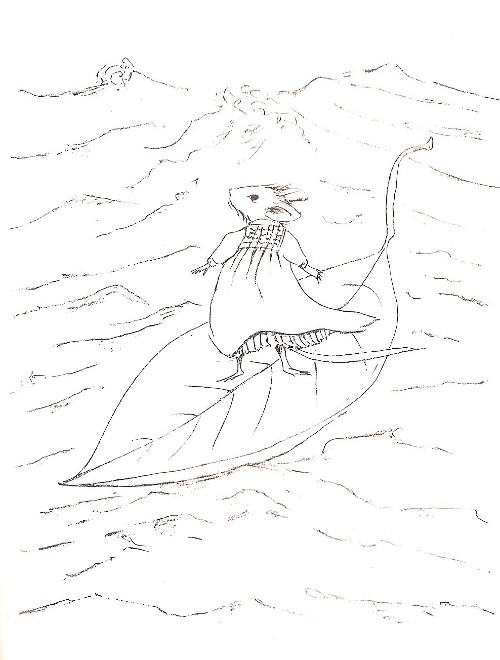
It felt good to be Me / On the Ship of my Life—BELIEF!”
Frances Foster Books, FSG, 1999
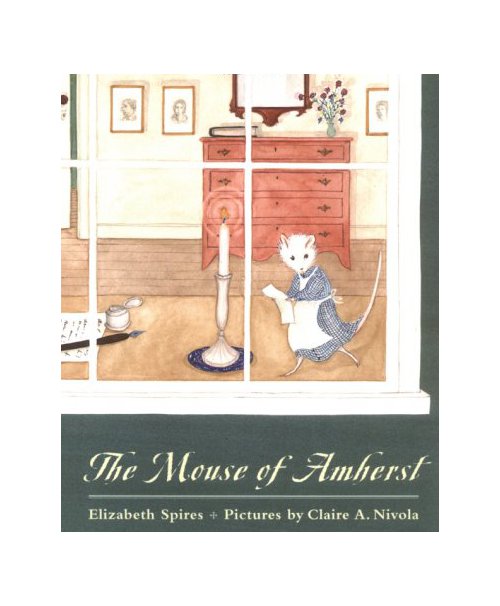
Jules: Where are your stompin’ grounds?
Claire: I live in Newton, MA, a suburb of Boston, in an old house that I love. There’s a lake nearby to swim in and a park to walk in and good neighbors. I have no car, and—living here—I can do everything by bicycle, trolley, or on foot.
Jules: Can you briefly tell me about your road to publication?
Claire: I illustrated my first book in 1970, right after graduating from college. My father, who was Italian and an artist, was asked by Fabio Coen, a fellow Italian and then head of Pantheon Books at Random House, if he would illustrate a children’s book of Italian fables called The Disobedient Eels. My father said he did not illustrate but that he had a daughter who could draw. In a nearby office on the same floor was a young editor named Frances Foster. After illustrating The Disobedient Eels, 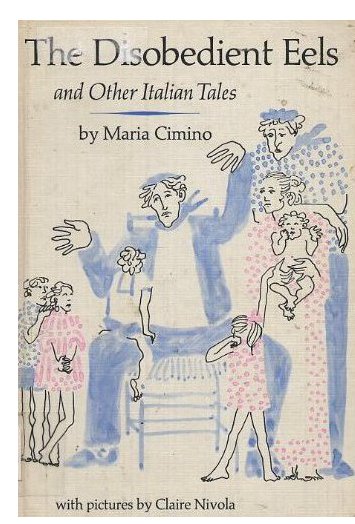 I illustrated a book that Frances was publishing for Knopf, called Save the Earth. Fabio Coen then decided to publish The Messy Rabbit, written by my mother, and I illustrated that one, too.
I illustrated a book that Frances was publishing for Knopf, called Save the Earth. Fabio Coen then decided to publish The Messy Rabbit, written by my mother, and I illustrated that one, too.
I wanted to go on illustrating, but after my lucky start I found it hard to find work. In those days, one could drop in on art directors at all the big New York publishing houses and sit down with them, as they leafed through one’s portfolio. I hated carrying my portfolio around, as if I were wearing a tag that said “artist.” When enough art directors said they liked my work but had no stories for me, I eventually gave up and pursued other work. Years passed, a good fifteen of them. My son was 11 and my daughter 8 when chance put me back in touch with Frances Foster, by now a renowned and beloved children’s book editor. A friend called me and said he knew someone who had a book in process, but the illustrator had fallen through. Would I be interested? It was my great good fortune—one of those happy twists of fate—that the editor for the book was Frances. I have been working with Frances ever since on most of my projects; she is an old friend by now and I can think of absolutely no one better to work with.
Jules: If you do school visits, can you tell me what they’re like?
Claire: I have done only a few. I feel good in the company of children, but I don’t really like appearing in front of them as if I’m somehow special because I’ve written and illustrated books.
Emma took up her pen and began to write.”
by Linda Glaser (2010, Houghton Mifflin)
(Click to enlarge spreads.)
Jules: Any new titles/projects you might be working on now that you can tell me about?
Claire: This spring I finished a book about my father’s hometown on the island of Sardinia, a place I visited many times in my childhood, loved with a passion, and continue to return to. The book doesn’t really have a story line; it’s a composite of those dizzying childhood visits. How to make American children experience what I felt then? That was the challenge. I tried with words and many painted images to recreate the excitement and emotion I felt as I ran through the streets with my cousins collecting the nectar of village life here and there. In the author’s note, I was able to step back and think about that village from the perspective of the passage of time. The book is called Orani: My Father’s Village (another Frances Foster book, due out this Spring).
Right now, I’m working on a non-fiction book about the oceanographer, deep sea diver, and passionate environmentalist, Sylvia Earle. In it, I tell a bit about her childhood and her underwater adventures, and in the author’s note I drive home the message she has devoted her career to: the vital importance of the ocean to our survival. When Sylvia Earle speaks publicly about the ocean, she first enchants us with descriptions of all she has seen and then tells us of the abuses we are subjecting that magical world to.
 Okay, coffee’s brewed, and let’s continue with six questions over breakfast (despite this post’s title…it’s fibbing, I tell you):
Okay, coffee’s brewed, and let’s continue with six questions over breakfast (despite this post’s title…it’s fibbing, I tell you):
1. Jules: What exactly is your process when you are illustrating a book? You can start wherever you’d like when answering: getting initial ideas, starting to illustrate, or even what it’s like under deadline, etc. Do you outline a great deal of the book before you illustrate or just let your muse lead you on and see where you end up?
Claire: I always begin with the idea and the written word. If I illustrate someone else’s story, there is a manuscript, the written word. If the book is mine, there is the idea. I suppose the idea could be visual, beginning with images and the writing coming after, but in my case, I always begin with the writing. I work on that as if I weren’t even an illustrator.
Then I hand myself the manuscript and think about it as an illustrator, breaking it down into page spreads. (I wrote one story that I realized only later wouldn’t work — not enough would happen in the illustrations to make it interesting visually!) After I’ve plotted out the book as a whole, I make a “dummy” with pencil sketches. If the book has been approved for publication, the dummy will be detailed with all the correct measurements for the illustrations, since a book size, margins, etc. will all have been worked out with the publisher. Once the dummy is approved, I paint the final illustrations following the sketches quite closely.
The family is coming for Sabbath and we have work to do!’…”
From The Friday Nights of Nana by Amy Hest (Candlewick Press, 2001)
(Click to enlarge spread and see in more detail.)
The main point here is that I love every step of the process. Having an idea for a story is a wonderful thing, even if it gestates slowly and with difficulty over years. Sometimes it comes from something I’ve heard or read, sometimes from something more internal. I never try to think, “what would children want?” I start with something that means something to me and then I try to put it in a form that a child would understand. Writing out the idea, trying to say it simply and well, trying to get it as right as I can, is a challenging process that I love.
Next comes taking the manuscript and seeing how to break it down into images. For some reason, this comes easily to me; I do it quickly and enjoy it. Images often come to me as if magically from the words, and I rarely have to struggle to think of a way to illustrate a page — though it has happened from time to time.
in her lace tablecloth. I fold napkins with lace borders.”
From The Friday Nights of Nana by Amy Hest (Candlewick Press, 2001)
(Click to enlarge spread.)
Now on to the planning of the book. I am hopelessly opinionated about typefaces and the overall look of the book. Art departments have been indulgent in allowing me to choose the book’s proportions, etc. and giving me free reign in laying out the images on the page. All this, too, gives me great pleasure. The final sketches come next, often involving research for images (a whole chapter unto itself), and then the final paintings. The sketches take concentration, as does the writing, though in a different way, also pleasurable. Painting is the dessert. I work with my tiny brushes and listen to music or public radio as I work. The beautiful colored paints, watercolor and gouache, are before me, and I can choose. There are new decisions to make—the sketches give no indication of color—but these decisions are almost instinctive to me or like play. Nothing comes out quite as I thought it would.
When I’m done, I lay all the illustrations out on the floor in order and can imagine the finished book for the first time. That is a thrill! And finally, as anyone who has done a book knows, there is the excitement, shared with the editor and the designer, of bringing everything together in a whole. From beginning to end, it is a wonderful and varied process.
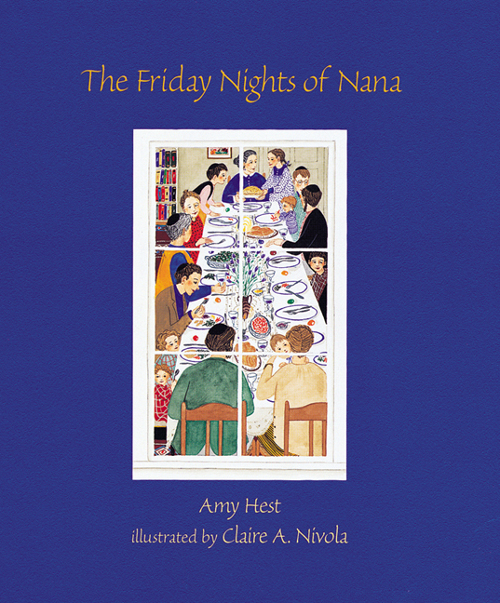
2. Jules: Describe your studio or usual work space.
Claire: I work in our “dining room,” right on the big table. I know this isn’t optimal, but I’ve never really wanted a studio. Having a “studio,” like calling oneself an “artist,” has always seemed a step too far for me. I write and illustrate books, and by now I’ve done so over enough years that I almost feel that’s what I do. But at the end of each project, there is the possibility I will never do one again, not have the inspiration for another story, or not be sent a manuscript by an editor. If I had a studio waiting and nothing to work on — what then? So, I’ve always worked in a provisory way, like a nomad just camping out for a while. Now that I am in my ’60s, I’ve thought that maybe it’s time to outgrow this tentativeness. After all, my children are grown up and live away from home. There are rooms empty in the house and free for the taking. I’m considering…. But then I can’t quite shake that sense that work, when it comes my way—that the birth of a book—is such an extraordinary thing, such a stroke of luck, that how can I presume it will go on forever!
(Click to enlarge.)
(Click each illustration to super-size.)
3. Jules: As a book lover, it interests me: What books or authors and/or illustrators influenced you as an early reader?
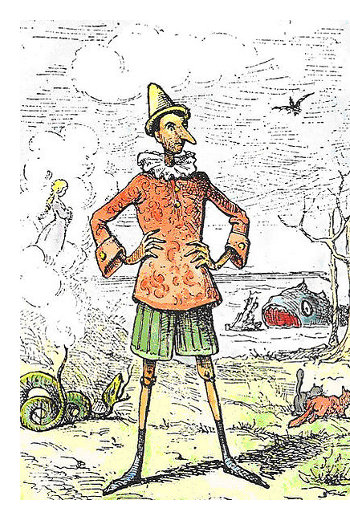 Claire: I don’t know about influence, but I loved all the classics, which I either read myself or my mother read aloud to me, often (my favorite thing!) while I drew. Pinocchio {Enrico Mazzanti’s Pinocchio pictured right; image in the public domain}, Winnie-the-Pooh, Alice in Wonderland, The Wind in the Willows, The Little Fur Family, Bambi, Treasure Island and Kidnapped, Stuart Little and Charlotte’s Web, The King Arthur stories, Gulliver’s Travels, The Arabian Nights, The Secret Garden and A Little Princess, Doctor Doolittle, Mary Poppins, etc. etc. — the whole canon. I remember poring over the illustrations in A Little Princess and those in The Wind in the Willows. I liked detail — I think most children do.
Claire: I don’t know about influence, but I loved all the classics, which I either read myself or my mother read aloud to me, often (my favorite thing!) while I drew. Pinocchio {Enrico Mazzanti’s Pinocchio pictured right; image in the public domain}, Winnie-the-Pooh, Alice in Wonderland, The Wind in the Willows, The Little Fur Family, Bambi, Treasure Island and Kidnapped, Stuart Little and Charlotte’s Web, The King Arthur stories, Gulliver’s Travels, The Arabian Nights, The Secret Garden and A Little Princess, Doctor Doolittle, Mary Poppins, etc. etc. — the whole canon. I remember poring over the illustrations in A Little Princess and those in The Wind in the Willows. I liked detail — I think most children do.
Since growing up, and having spent some of my happiest hours reading to my own children, I have discovered many other marvels — among them, the delightful books of William Steig.
4. Jules: What is currently in rotation on your iPod or loaded in your CD player? Do you listen to music while you create books?
Claire: I listen to music, to The Teaching Company CDs, and to radio. (NPR’s On Point is my favorite.) I find that the listening part of my brain does not interfere in any way with the part that directs my eye and my hand. In fact, I listen particularly well while painting. Of course, if I’m writing, or making decisions about a sketch, that’s another matter. I need my full concentration for that. But, if a sketch is all worked out and I’m painting the final version, even little decisions about which color to put where seem to get made easily while I listen to something else. In fact, if I’m nervous about starting a new illustration or painting a particularly tricky part of a picture, listening to an interview or music distracts me just enough to give me the boldness to dive in and take a chance!
(2004, Houghton Mifflin)
(Click to enlarge illustrations.)
5. Jules: What’s one thing that most people don’t know about you?
6. Jules: Is there something you wish interviewers would ask you — but never do? Feel free to ask and respond here.
Claire: In answer to {both} 5 and 6: When people see your work or hear the facts of your life from the outside, they see accomplishment, certainty, a clear pattern of a life. What they don’t know (though they may feel it about their own lives) is how the story line was not so clear, as it was lived. The pattern only appears in hindsight. Now as I listen to music and paint, I can say that this was just what I did as a child when my mother read me stories and I drew or when I worked in my father’s studio by his side, and that it all makes perfect sense. But what of all the detours, false starts, and other yearned-for directions? What of the twenty years totally absorbed in being a mother and never touching my brushes? What of all the ways in which we are not consistent, the impasses and changes that make the fact that our lives seem to be a solid, single story surprising — most of all, to ourselves.
All illustrations secured from respective publishers. All rights reserved. THE MOUSE OF AMHERST images are used with permission of Claire A. Nivola.
Today’s Nonfiction Monday round-up is at Diane Chen’s Practically Paradise, for those wanting to read up on more nonfiction titles.
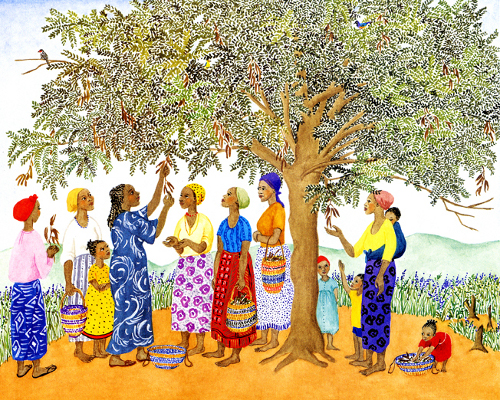

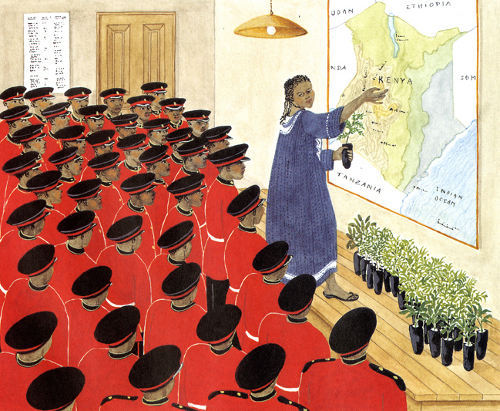
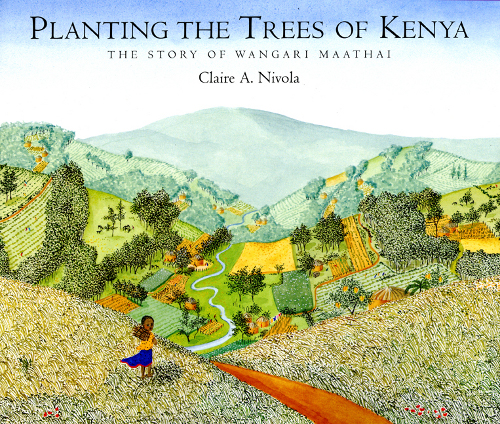
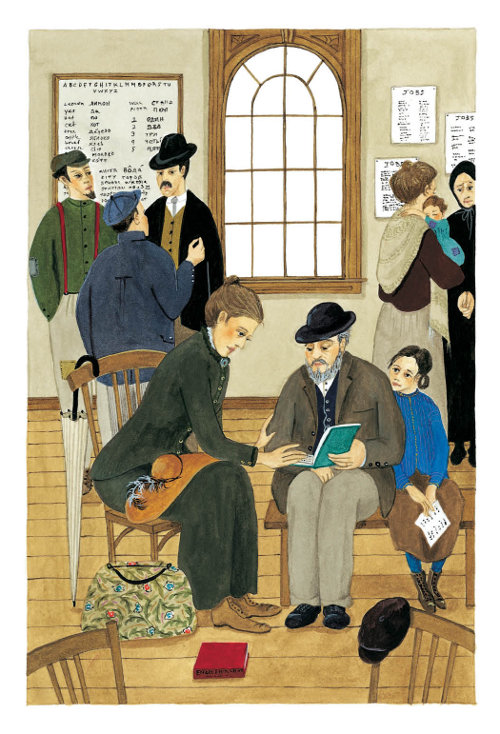
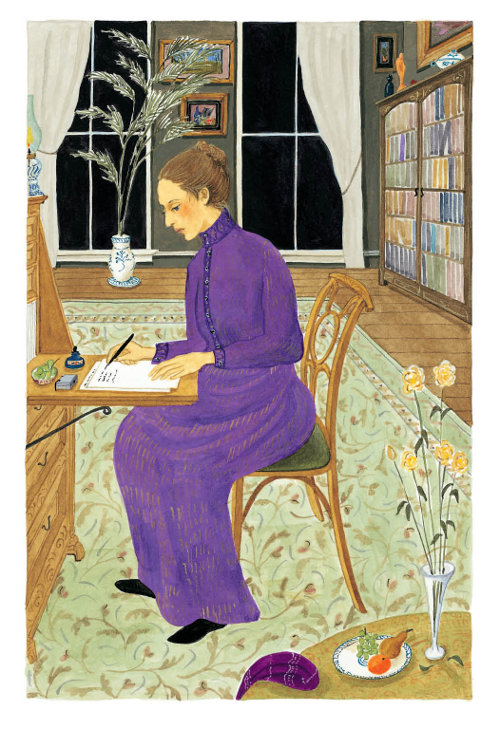
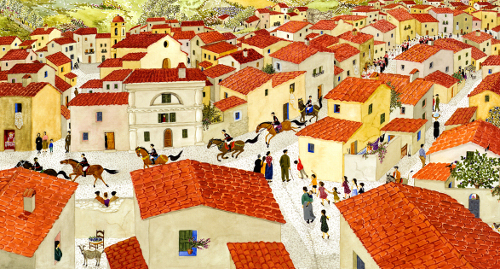
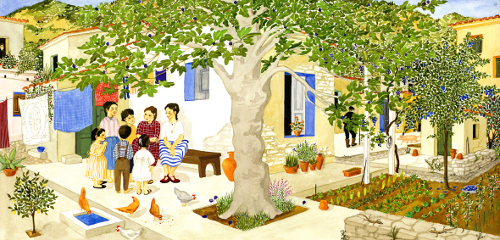
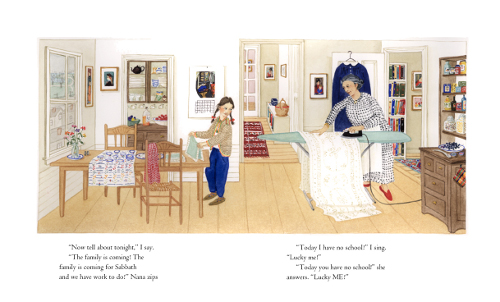
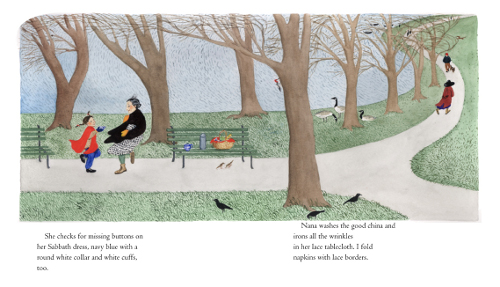
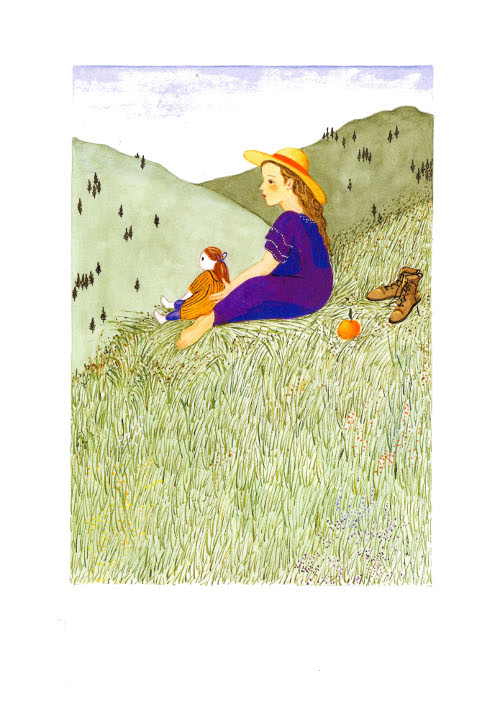
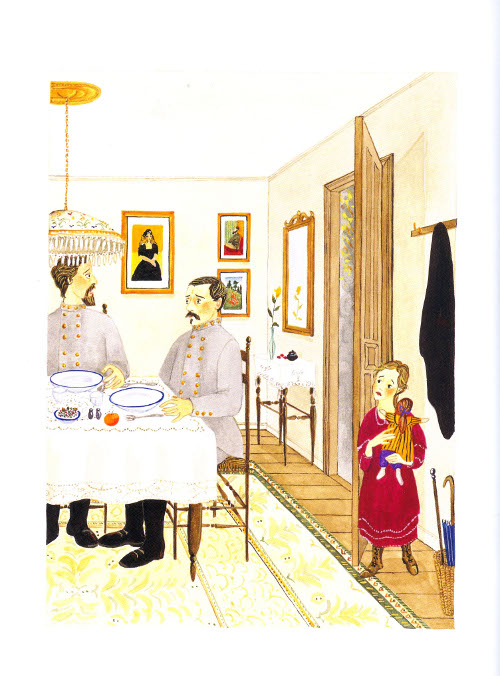
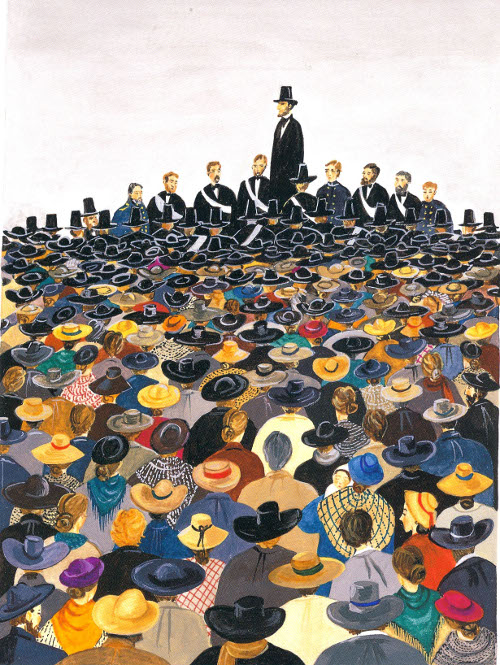
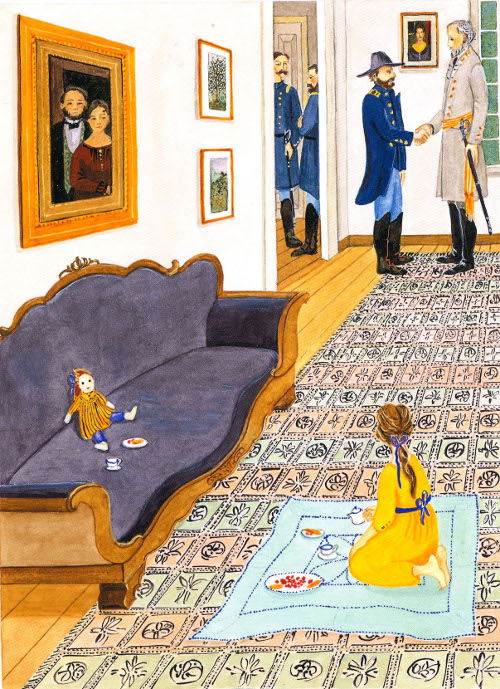
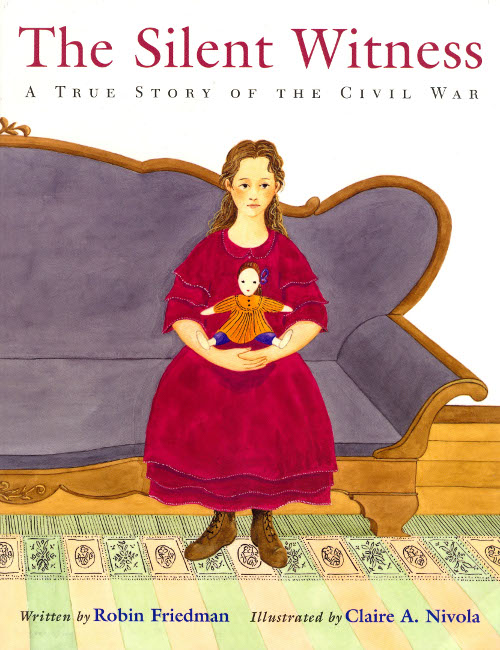
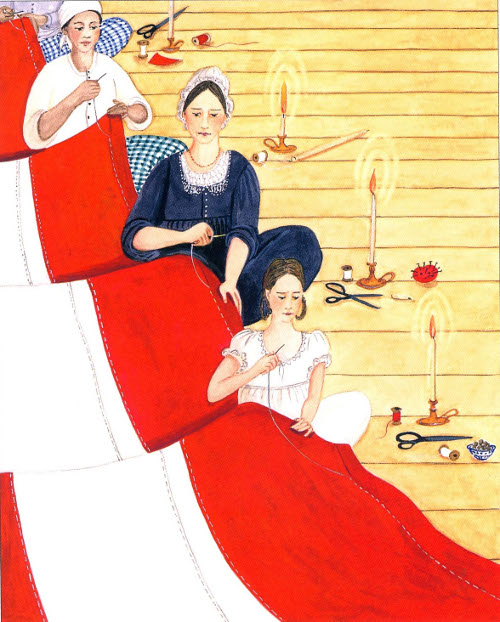
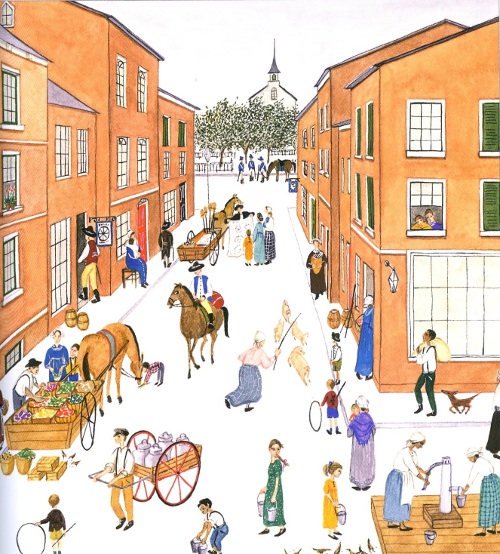

What a beautiful interview to start the week. Thank you, Jules for asking the questions and Claire for answering them so openly and honestly. I felt like I was in the room with both of you.
It makes so much sense to to me that you don’t have a studio. When I write, I love quiet but I want the door open. I want to be close to life.
jules, I love the rhythm of text and pictures and questions and answers that you create throughout your coffee interviews! I have always loved Nivola’s artwork – thank you!
What an amazing person-who-illustrates-and-writes books! Her illustrations are so beautiful, and her words as well. I’ll be coming back to this one often! Thanks for it!
Oh, I love Claire Nivola’s books and have often taught Planting the Trees of Kenya, which opens hearts. And I love this interview, too. And am nearly breathless waiting for the Sylvia Earle book.
I think all of Claire Nivola’s work is beautiful, but I am especially fond of The Forest, which was also one of my daughter’s favorite books. I’m very glad I had the chance to know her a little through this interview. Thanks!
Wow,
wonderful works, so beautiful and delicate
Jules,
I love Claire’s art! Thanks for this 7-Imp post about a gifted children’s book author and illustrator.
Thank you for this lovely interview. Claire’s new book looks stunning. Planting the Trees of Kenya was one of our Spirit of PaperTigers Book Set last year and I had the pleasure of interviewing her. Here’s the link to our Gallery – http://www.papertigers.org/gallery/Claire_Nivola/index.html
Thank you, Marjorie, because I had meant to link to that and forgot!
Also, I found this lovely interview at Lori Calabrese’s blog.
Thank you for this gorgeous interview – love her work so much – Orani My Father’s Village looks just amazing!!
Do you have an e-mail address for Claire A. Nivola? I want to get in touch with her because I am looking for an illustrator for the Children’s book I have been writing.
I live in Rhode Island, a short distance from Massachusetts.
Bruce Allan Moran
1-401-862-0155
[…] who speaks to you, isn’t it?’” This morning at Kirkus, I weigh in on Claire A. Nivola’s picture book biography, Life in the Ocean: The Story of Oceanographer Sylvia Earle. The link will […]
[…] & Illustrator: Claire A. Nivola (interview from Seven Impossible Things Before […]
[…] The photo of Claire below comes from my 2011 7-Imp interview with her, one of my favorite interviews at this site, I have to […]
[…] in the Ocean: The Story of Oceanographer Sylvia Earle by Claire A. Nivola (FSG/Frances Foster Books, […]
I write this from a 3 year retreat in Crestone, CO and on Claire’s birthday. An old friend of hers, I am so impressed by this interview and the output and quality of her work. Bravo! With the world in turmoil, this provides a little oasis of hope and joy!
Another wonderful interview! I love Nivola’s work and what she has to say about it. Thanks.
[…] you will learn to take care of yourself.” In early May, fans of the work of Claire A. Nivola will be happy to see Star Child hit shelves (Frances Foster Books/Farrar Straus Giroux). It’s […]
Looking for an e-mail! Just wrote a light piece that involved boar hunting out of Orani back in 1970s when I was doing archaeology in Italy-
MJB
[…] in the Ocean: The Story of Oceanographer Sylvia Earle by Claire A. Nivola (FSG/Frances Foster Books, […]
[…] in the Ocean: The Story of Oceanographer Sylvia Earle by Claire A. Nivola (FSG/Frances Foster Books, […]
[…] … I’m going to meet author-illustrator Claire Nivola. (Bucket-list item for […]
[…] Visiting, while there, with author-illustrator Claire Nivola at her beautiful home. I wish I’d gotten a photo of us, but I was too busy visiting to get my […]